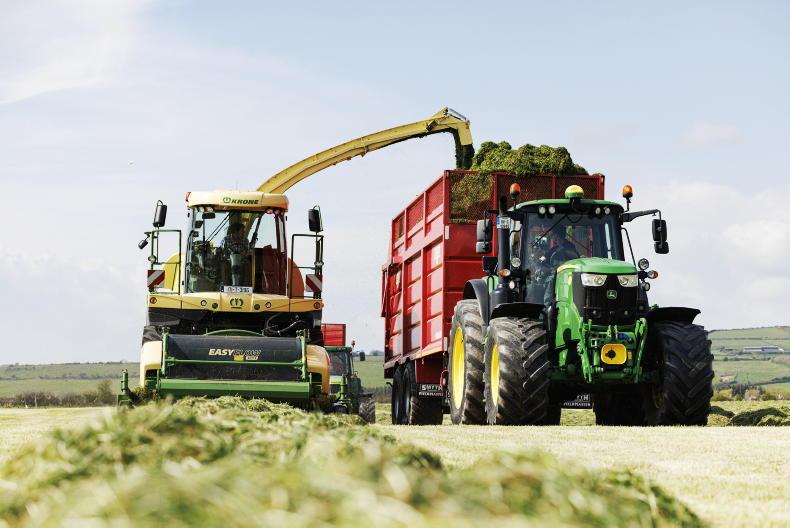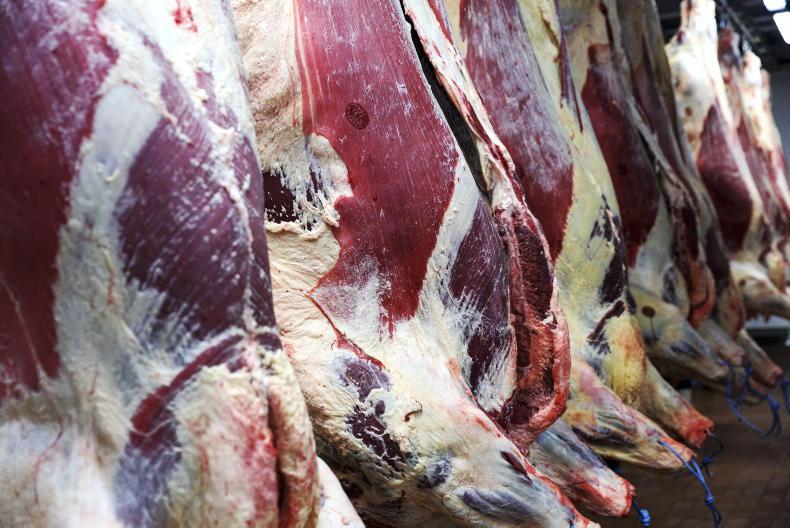There is no doubt that factories, encouraged by the kill going up 1,411 head last week to 34,740, are trying to buy cattle for less next week, but there is no guarantee that they will succeed.
The wet weekend and the fact that there is a peak of cattle turning 30 months old around now meant that farmers were in a selling mindset, but if weather dries up there will be less pressure to sell.
So, factories may be offering €4.55/kg for steers and €4.60/kg for heifers, but whether that will be enough to tempt farmers to sell remains to be seen and from talking to agents on Wednesday, there seems to be a willingness to negotiate.
One factor in farmers’ favour is that cattle numbers have tightened in Britain and factories in the North are actively looking for cattle.
Even if they aren’t increasing the price, they aren’t talking about any less and the feeling is that factory cattle will be a steady trade there for the immediate future.
Northern buyers are also active in marts south of the border, particularly for heavy factory ready cattle.
Price outlook
With the huge gap already between Irish and British cattle and prices rising there for steers and heifers last week, farmers would be hoping that prices would at least hold here.
However, if factories are finding it easy to get cattle in the coming days, then we can expect they will be pushing to buy at €4.55/kg for steers and €4.60/kg for heifers.
On the other hand, if there is no rush of cattle out and factories are making the calls, then it will be a sign that €4.60/kg can be negotiated for steers and €4.65/kg for heifers.
It will only be exceptional deals that will be done above this price level, but there is a strong expectation that sellers should be pushing to hold €4.60/kg on steers and €4.65/kg on heifers.
Young bulls are also likely to come under pressure if factories succeed in paying less for steers. If they are to drop 5c/kg, that will mean that most sales will be in the €4.65/kg to €4.75/kg region for bulls under 24 months, with under-16-month bulls paid on the grid from steer price.
There is much less talk of dropping cow price, with plenty of demand for good cows across the country.
The success of Dawn and Liffey Meats in shipping retail packs of mince to France alongside strong burger chain demand helps underpin this business, as are northern buyers around the marts.
That means that prices are at least holding steady, with P+3 cows at €3.70/kg to €3.80/kg, O grades €3.90/kg to €4.00/kg and the exceptional R grading cows anywhere up to €4.40/kg, getting close to prime beef price.
Lift in British price
Steer numbers in Britain last week were down over 7%, heifers were down 5%, young bulls down almost 11% and cow numbers were down over 9%.
The tightness of cattle supply meant factories had to up their prices to draw cattle out and the result was a 1.7p/kg (2c/kg) lift in steer prices and a 2.9p/kg (3.4c/kg) lift in heifer prices.
The young bull and cow trade was slightly weaker, down 2.2p/kg (3c/kg) and 3.7p/kg (4c/kg) respectively.
That brings the average steer price in Britain up to almost £4.57/kg, which is the equivalent of €5.60/kg when VAT is added, while the average heifer price is £4.55/kg, which works out at €5.56/kg when vat is included.
Northern Ireland
While the LMC official quotes for U-3 prime cattle this week were ranging between £4.32/kg and £4.36/kg (€5.29/kg to €5.34/kg inc VAT), the expectation is that 80% of cattle will be bought at £4.60/kg for the U3 grade, which converts to €5.64/kg when VAT is included.
Cows remain in demand, with quotes of £3.46/kg (€4.24/kg inc VAT), but deals at 10p/kg to 12p/kg more are still being done.









SHARING OPTIONS